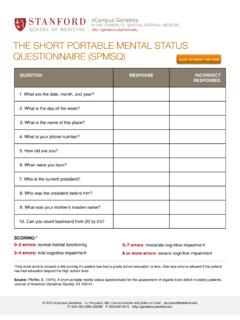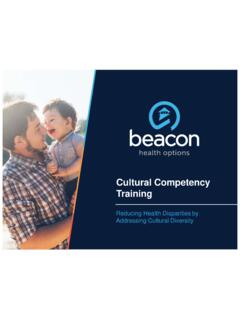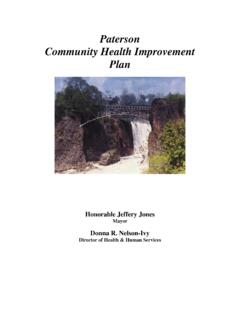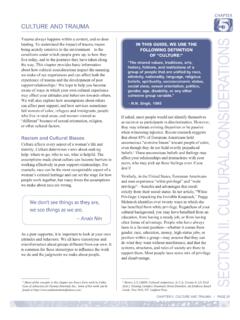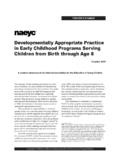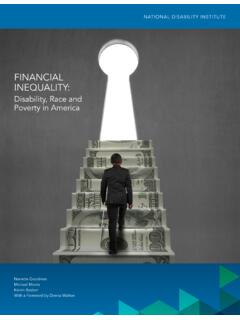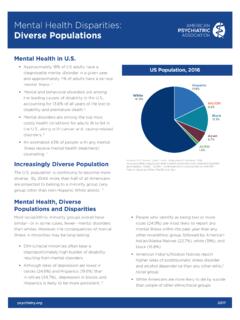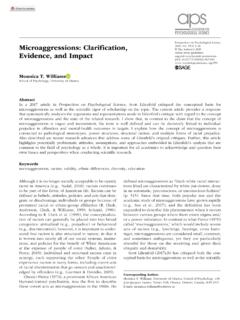Transcription of Health and Health Care of African American Older Adults
1 Course Director and Editor in Chief: VJ Periyakoil, MD Stanford University School of Medicine 650-493-5000 x66209 : Rita Hargrave, MD VA Northern California Healthcare System, Martinez; UC Health and Health Care of African American Older AdultseCampus GeriatricsIN THE DIVISION OF GENERAL INTERNAL MEDICINE Hno MED 2010 eCampus Geriatrics Business Images/Catherine YeuleteCampus Geriatricsafrican American Older Adults | pg 2 2010 eCampus Geriatrics VJ Periyakoil, MD, Course Director & Editor in Chief 650-493-5000 x66209 visit us online: 3 Learning Objectives 3 Introduction 4 Topics Population Growth & Distribution 4 Characteristics 6 Patterns of Health Risk Topics Life Expectancy, Mortality 7 Morbidity 8 Self-Rated Health & Functional Status 9 Culturally Appropriate Geriatric Care.
2 Fund of Knowledge 10 Topics Health History 10 Health Beliefs 13 Causes of Illness & Approach to Intervention 14 Culturally Appropriate Geriatric Care: Assessment 15 Topics Cultural Biases & Misdiagnoses 15 Showing Respect, Use of Assessment Instruments 16 Culturally Appropriate Geriatric Care: Delivery of Care 17 Topics Cardiovascular Disease 17 Stroke, Breast Cancer 19 Mental Health 20 End-of-Life Care 21 Access & Utilization 22 Topics Disparities 22 Patient-Based Factors 22 Physician-Based Factors 23 End-of-Life Care Issues 26 Health Promotion 29 Instructional Strategies 31 Topics Projects & Assignments 31 Case Study 1: Mr.
3 S 32 Case Study 2: Mrs. P 35 Student Evaluation 36 Topics Objective Questions, Essay Questions, Group Projects, Reports and Exams, Case Studies, Sample Questions 36 References 37 Links & Resources 43 Suggested Reading 44 Appendices Topics A: Important Cultural Terminology 46 B: Cancer Survival Rates 47 C: Recent History 48 D: Cohort Experiences 50 Copyright/Referencing InformationUsers are free to download and distribute eCampus Geriatrics modules for educational purposes copyrighted photos and images used in these modules retain the copyright of their original owner. Unauthorized use is using this resource please cite us as follows:Hargrave, R, MD: Health and Health care of African American Older Adults In Periyakoil VS, eds.
4 ECampus Geriatrics, Stanford CA, Geriatricsafrican American Older Adults | pg 3 2010 eCampus Geriatrics VJ Periyakoil, MD, Course Director & Editor in Chief 650-493-5000 x66209 visit us online: module presents an overview of available information on Health conditions among African American or Black Older Adults in the with emphasis on historical influences on their Health and Health Director & Editor in Chief of the Ethnogeriatrics Curriculum & Training VJ Periyakoil, MDStanford University School of MedicineAuthorRita Hargrave, MD VA Northern California Health Care System, Martinez; UC DavisAcknowledgementsSpecial thanks to the following people for their contributions to this module: Sharon Gordon, PhD; Margaret Hargreaves, PhD; Janet Lieto, DO; Elyse A.
5 Perweiler, RN, MPP; Veronica J. Scott, MD, MPH; Wilbur Watson, PhD (deceased); Mary P. Williams, EdD, PA-C; Gwen Yeo, PhD; Motisola Zulu, OBJECTIVESA fter completing this module, learners should be able to: 1. Describe the status and care of Black Older Adults during the antebellum period of the United States. 2. Describe the different assumptions of Black Older Adults that help to inform conceptions of Health and illness. 3. Describe today s African American population using the following categories: a. demographic characteristics b. ethnic-specific patterns of social support c. major causes of mortality d. relative risk for dementia, diabetes, and prostate cancer4. Identify key barriers to Black Older Adults participation in Health and related Explain briefly the concepts: natural causes of illness; occult and spiritual forms of Discuss the effects of cultural bias on misdiagnoses and errors in treatment planning for Recommend a culturally appropriate approach to end-of-life care for African American Older CHARACTERISTICSTime to Complete: 2 hrs, 0 minsIntended Audience: Doctors, Nurses, Social Workers, Psychologists, Chaplains, Pharmacists, OT, PT, MT, MFT and all other clinicians caring for Older : YesIn this module the terms Black and African American are used interchangeably.
6 The terms Black and African American are used to indicate persons who were born in the US as no separate data are available for Black Older Adults who have immigrated from other Geriatricsafrican American Older Adults | pg 4 2010 eCampus Geriatrics VJ Periyakoil, MD, Course Director & Editor in Chief 650-493-5000 x66209 visit us online: AND OVERVIEwPopulation Growth and DistributionThe African American population today is comprised of individuals of mixed ethnic and cultural heritage. The slave trade resulted in a diaspora from West and Central Africa to many parts of the world, including the West Indies, South America, Central America and the United States. Over the centuries, in all of these parts of the world, the African has mixed with other local ethnic groups.
7 In America, this intermixing has largely been with American Indians and European has been continuous growth in the overall population of Blacks in the United States since 1790. In 1790, the year of the first census, the Black population numbered about 757,000. Since 1970, there has been considerable growth in the population of Blacks. The growth in the proportion of Blacks 65 and over since 1970, in comparison to the growth rate of Blacks under 18 years and those 18 to 64 years, shows a considerably more rapid rate for the Older group than for the younger age groups. This pattern is accounted for in part by a decline in the fertility rate among Blacks that began in the late 1960s. Given an expectation of (1) a continuing decline in the fertility rate, (2) further improvements in Health care, and (3) increased life expectancy of Blacks, this pattern of growth in the number of persons 65 and over is expected to continue (Watson, 1982).
8 By 1990, the population of Blacks in the United States totalled more than 30 million people. According to the US Census, the Black population increased by percent, or 522,000, between 2005 and 2006. To date, over million Americans are aged 65 and over. Over the next forty years, the number of people aged 65 and Older is expected to double and the number of people aged 85 and Older is expected to triple. The total 65 and Older population is expected to exceed 10 million by 2050 ( ) (see Figure 1). Data on the subgroups of Haitian Older Adults or those from African or other Caribbean backgrounds are not : Administration on Aging, 2006 Along with growth in the population of Blacks, there have been noticeable changes in their geographical distribution in the United States.
9 In 1890, the year of the first census in which data were made available on urban-rural distribution of Blacks, 80% of all Blacks lived in the rural southern United States. By 1970, however, the 1890 pattern was reversed: about 81% of Blacks had become concentrated in urban areas. Most recently, the US Census (2006) reports New York having the largest Black population ( million), followed by Florida (3 million) and Texas ( million). See Figure 2 on page & Projections of Black PersonsAged 65 plus: 1980 2050 (numbers in millions)Fig. 1 2010 VJ Periyakoil, MD Geriatricsafrican American Older Adults | pg 5 2010 eCampus Geriatrics VJ Periyakoil, MD, Course Director & Editor in Chief 650-493-5000 x66209 visit us online: Florida1.
10 New York3. TexasStates with the Largest African American PopulationsBased on 2006 CensusFig. 2 2010 VJ Periyakoil, (INTRODUCTION & OVERVIEW CONT D)eCampus Geriatricsafrican American Older Adults | pg 6 2010 eCampus Geriatrics VJ Periyakoil, MD, Course Director & Editor in Chief 650-493-5000 x66209 visit us online: Americans who identify themselves as Black or African American are extremely varied. Although many are low income, very large and growing segments are in the middle and upper income categories. Some are retired professionals, and many others have children with professional careers. Religious affiliations include: Protestant Catholic Muslim NoneMany are still living in the rural South, but more are in urban areas in the North and West.
